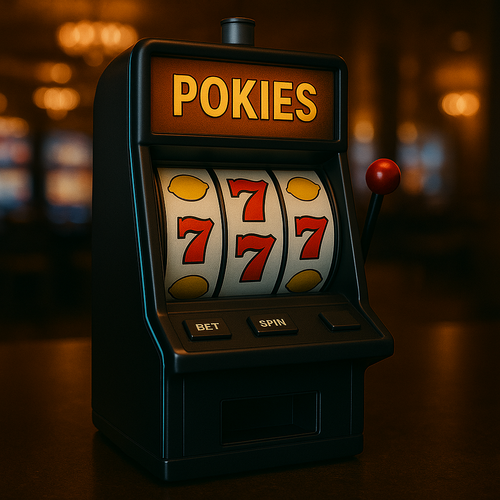Slot history: The journey from mechanical machines to online poker
Published: April 27, 2025

Slots are one of the most popular types of gambling in the world. Today they are available on computers, smartphones and in real casinos. But the path of slot development has been long and exciting. Let's take a closer look at how it all began.
First steps: The birth of the slot machine (late 19th century)
The history of slots began in the 1890s. The first devices similar to modern slot machines were mechanical machines with rotating drums.
1891 - Sittman and Pitt from Brooklyn (New York) created a gaming machine with five drums on which card symbols were placed. Players would insert a coin and pull a lever to get the winning combination.
Winnings were then not paid automatically by the machine - usually the guest received a drink or cigar from the bar owner for the winnings.
Appearance of "One Armed Bandit" (1895-1899)
The gambling world was revolutionized by Charles Fey of San Francisco.
1895 - he invented the Liberty Bell assault rifle.
The machine had three rotating drums with five symbols: horseshoes, stars, peaks, worms and a broken bell of freedom.
The payment was made automatically: three symbols of the bell gave the maximum winnings - 50 cents.
Liberty Bell became so popular that it quickly spread across America.
Prohibitions and first tricks (beginning of the 20th century)
At the beginning of the 20th century, US laws began to restrict gambling.
To circumvent the bans, manufacturers changed the symbolism: instead of card suits, they used fruits - cherries, lemon, plums.
So "fruit machines" appeared, and instead of cash prizes, chewing gums of the corresponding taste were issued.
Electromechanical automata (1960s)
Technology continued to evolve.
1963 - Bally launched the first fully electromechanical Money Honey machine.
It was equipped with a start button instead of a lever and could pay up to 500 coins without the help of a cashier.
Electromechanics allowed the addition of light and sound effects, increasing player engagement.
Video slot era (1970s-1980s)
The next breakthrough occurred in the 1970s.
1976 - Fortune Coin Co. from Las Vegas introduced the first video slot based on the Sony television screen.
Initially, players were skeptical, but after certification of slot machines at the Hilton Casino in Las Vegas, video slots quickly gained popularity.
Video slots made it possible to create more complex games with bonus rounds and many paylines.
The advent of online slots (1990s)
With the spread of the Internet, a new chapter of history began.
1994 - Microgaming developed the first online gambling platform.
The first online slots were copies of classic slot machines, but soon began to offer unique themes, progressive jackpots and bonus games.
Online slots have made gambling available from anywhere in the world, giving the industry a massive boost.
Development of mobile slots (2010s)
With the development of smartphones and tablets, slots have adapted to mobile devices:- There are convenient mobile versions of games.
- Players got the opportunity to rotate the drums at any time - on the road, at home, on vacation.
- Mobile slots today make up a huge share of the global gambling market.
Modern trends: VR, Megaways and gamification
Innovation did not stop:- VR slots - games with a complete immersion in virtual reality.
- Megaways ™ - technology of random number of paylines on each back.
- Gamification - Implementing missions, levels, and achievements in slots to increase engagement.
- Modern slots are no longer just spinning drums, but full-fledged interactive entertainment.
- The biggest jackpot on the online slot was more than $20 million.
- In some countries, such as Australia, the word "slots" has been replaced by "pokies."
- The probability of winning in modern slots is calculated using complex random number generators (RNG).
Conclusion
The history of slots is the story of the evolution of technology, entertainment and the human drive to try your luck.
It has come a long way from mechanical machines of the 19th century to modern VR slots, but the essence remains the same: excitement, vivid emotions and a dream of a big win.
And who knows what new exciting turns await slots in the future?..
